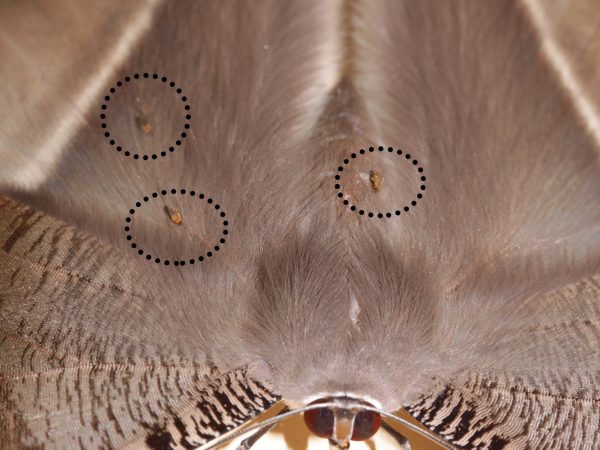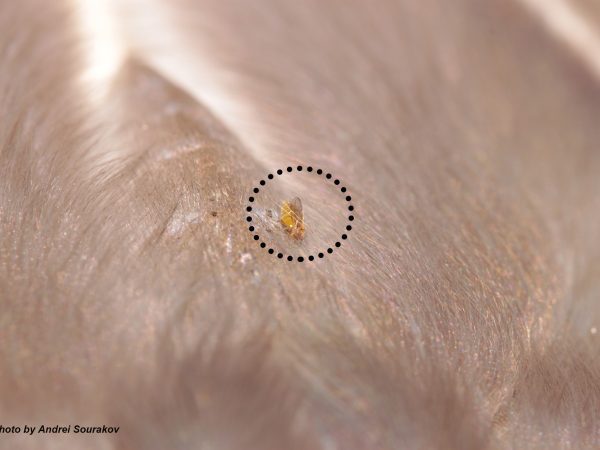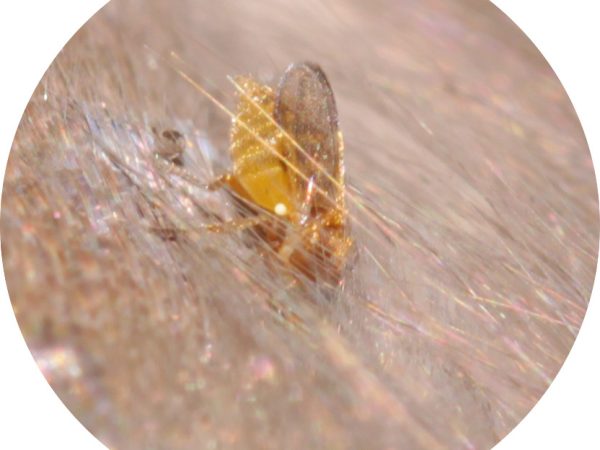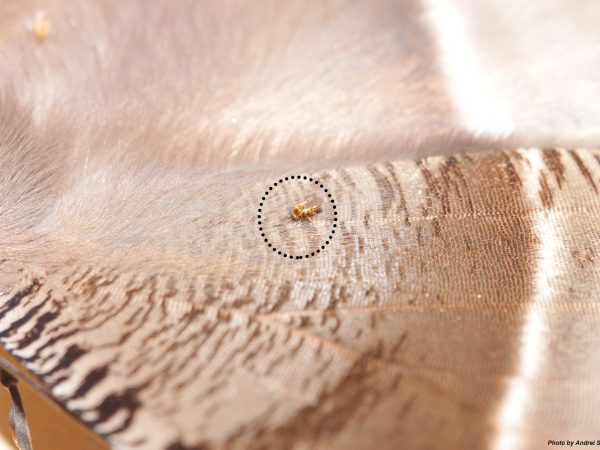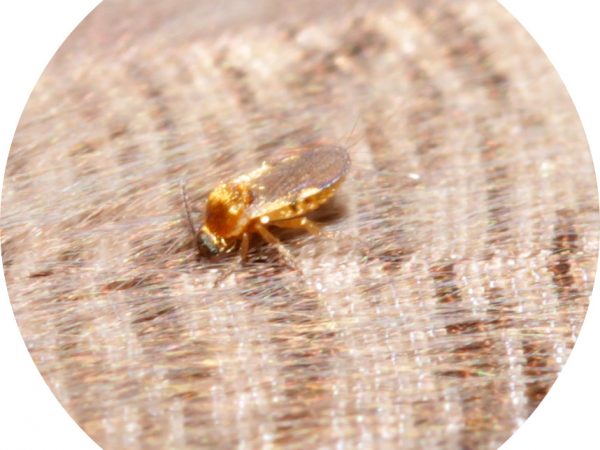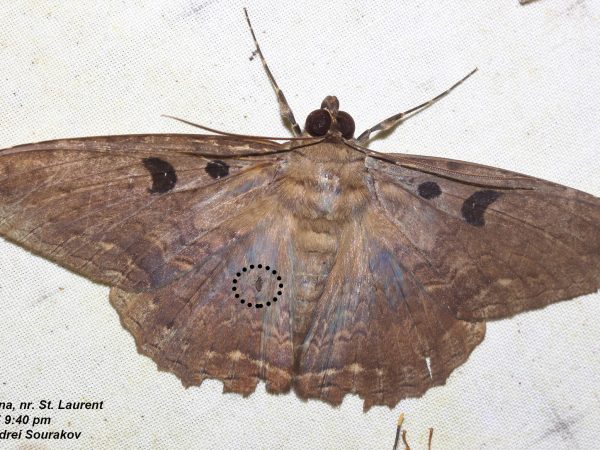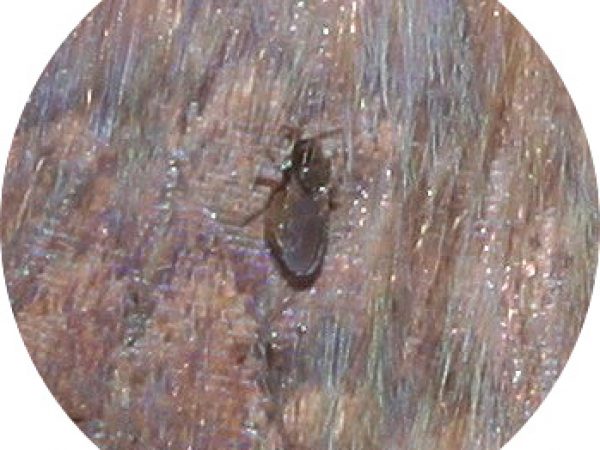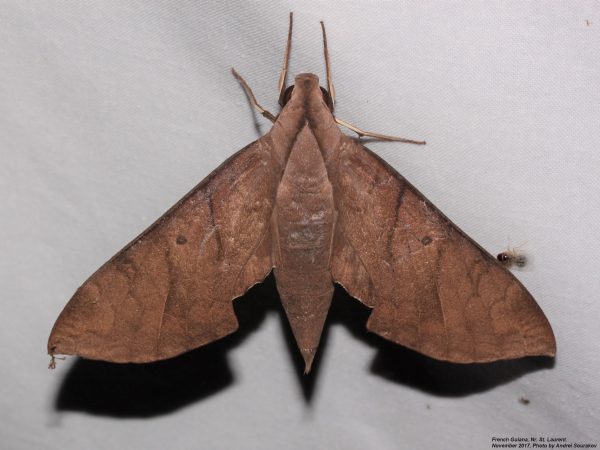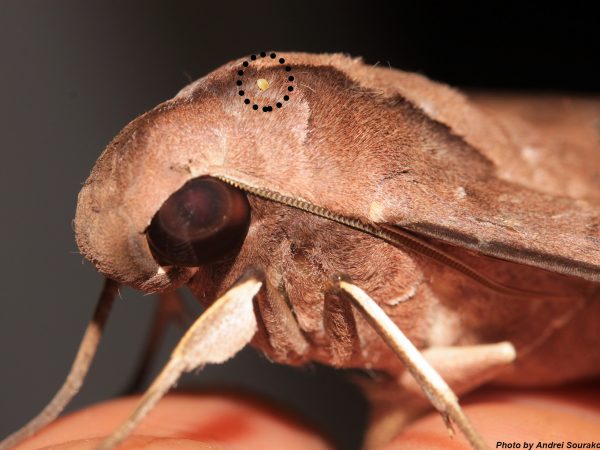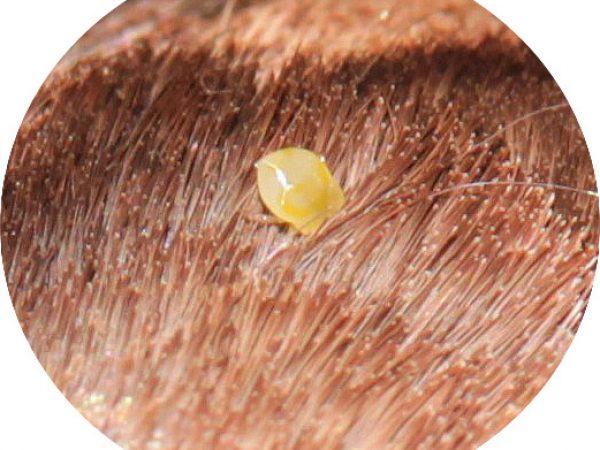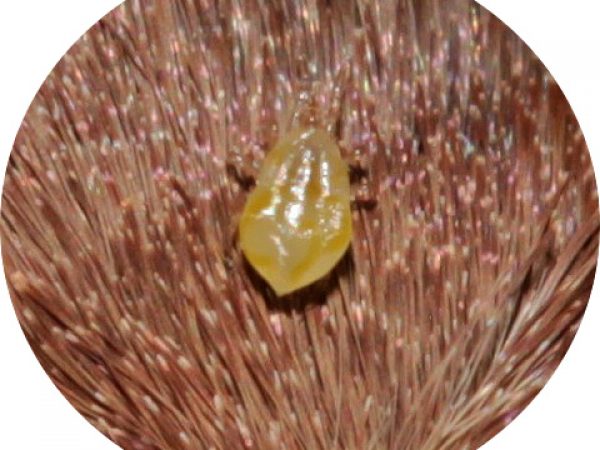I know what you are going to say: “Moths have no blood.” That’s splitting hairs though—moths have liquid called hemolymph that performs similar function as our blood; it’s not red because there is no hemoglobin. In moths, lymph delivers nutrients throughout the body, while oxygen is delivered via the tracheal system straight to the moth’s tissues.
In any case, from the point of view of blood- (lymph-) sucking parasites, such as no-see-ums – the biting midges in the family Ceratopogonidae – there is little difference. They are not after oxygen; they are after the aforementioned nutrients.
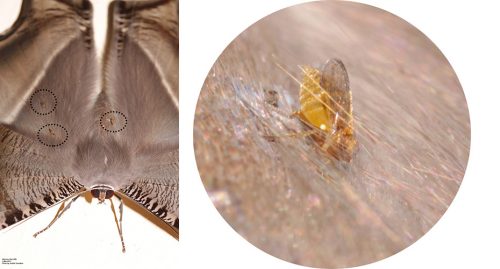
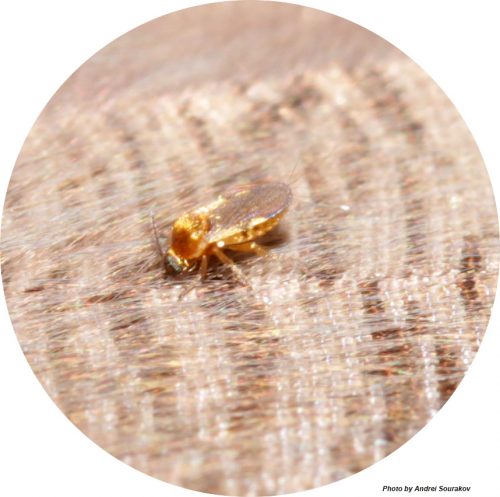
When I was photographing moths in Vietnam a few years ago and happened to look closely at the resulting photos of the Tropical Swallowtail Moth (Lyssa zampa), I discovered some biting midges (genus Forcipomyia) sucking lymph from the moth’s abdomen and wing veins. Looking at the swollen, yellow bellies of the midges, there was little doubt about what they were after.
Last week, I was looking through photos I had taken of moths in French Guiana more recently. I was surprised to find more of such lymph-feeding midges on one of the large erebid moths that visited the blacklight setup. Both the Vietnamese and South American victims of the midges were very large moths, with wingspans of five to six inches.
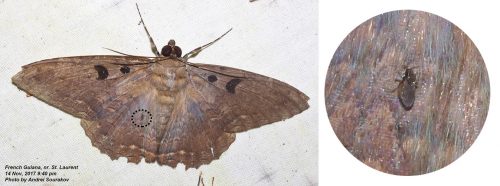
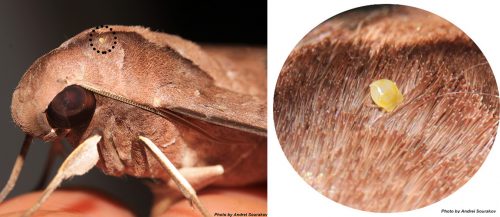
Among other such post-processed discoveries were mites feeding on an equally large sphinx moth. What the mites get out of their association with the Sphingidae is not entirely understood, but they are frequently found on these fast-flying moths.
To view larger and additional images of midges and mites on tropical moths, see the gallery below.
 Tropical Swallowtail Moth (Lyssa zampa), Bach Ma, Vietnam
Tropical Swallowtail Moth (Lyssa zampa), Bach Ma, Vietnam Forcipomyia biting midge on Lyssa zampa moth
Forcipomyia biting midge on Lyssa zampa moth Forcipomyia biting midge on Lyssa zampa moth
Forcipomyia biting midge on Lyssa zampa moth Forcipomyia biting midge on Lyssa zampa moth
Forcipomyia biting midge on Lyssa zampa moth Forcipomyia biting midge on Lyssa zampa moth
Forcipomyia biting midge on Lyssa zampa moth Biting midge feeding on an erebid moth, French Guiana
Biting midge feeding on an erebid moth, French Guiana Biting midge feeding on an erebid moth, French Guiana
Biting midge feeding on an erebid moth, French Guiana Pachylia sphinx moth, French Guiana
Pachylia sphinx moth, French Guiana Mite feeding on Pachylia sphinx moth, French Guiana
Mite feeding on Pachylia sphinx moth, French Guiana Mite feeding on Pachylia sphinx moth, French Guiana
Mite feeding on Pachylia sphinx moth, French Guiana Mite feeding on Pachylia sphinx moth, French Guiana
Mite feeding on Pachylia sphinx moth, French Guiana
Additional references about midges that bite insects:
- Wirth, W.W. 1956a. New species and records of biting midges ectoparasitic on insects. Ann. Ent. Soc. Amer. 49:356-364.
- Wirth. 1956b. The biting midges ectoparasitic on blister beetles. Proc. Ent. Soc. Wash. 58: 15-23.
- Wirth & D. H. Messersmith. 1971. Studies on the genus Forcipomyia. 1. The North American parasitic midges of the subgenus Trichohelea. Ann. Ent. Soc. Amer. 64: 15-26.
- Borkent, A. & L.C. Rocha-Filho. 2006. First record of female adult Atrichopogon Kieffer biting in the Neotropical Region. Proc. Ent. Soc. Wash. 108: 998-1001.
- Clastrier, J. & J. Legrand. 1984. Forcipomyia (Pterobosca) pinheyi nouvelle especie de L’ile Maurice parasite de ailes de Libellules et nouvelle localisations du sous-genre. Revue France Ent. (N.S). 6: 173-180.
- Clastrier & Legrand. 1990. Forcipomyia (Pterobosca) incubans (Macfie) et F. (Trichohelea) machete n. sp. parasites de ailes de libellules en Guyane Francaise. Revue France Ent. (N.S). 12: 167-170.
- Clastrier, D. Grand & J. Legrand. 1994. Observation exceptionnelles en France de Forcipomyia (Pterobosca) paludis (Macfie), parasite des ailes de Libellules. Bull. Soc. Entomologique de France. 99: 127-130.
- Koptur, S., Pena, J.E. and Grogan, W.L., 2013. The Biting Midge, Forcipomyia (microhelea) eriophora (Williston)(Diptera: Ceratopogonidae), an Ectoparasite Of Larval Phoebis sennae (Pieridae) in South Florida. The Journal of the Lepidopterists’ Society, 67(2), pp.128-130.
- Kawahara, A.Y., Winkler, I.S. and Hsu, W.W., 2006. New host records of the ectoparasitic biting midge Forcipomyia (Trichohelea) pectinunguis (Diptera: Ceratopogonidae) on adult geometrid moths (Lepidoptera: Geometridae). Journal of the Kansas Entomological Society, 79(3), pp.297-300.
